
Artist Influences:
The project was inspired by a diverse range of artists and concepts, including the interactive creativity of “Wreck This Journal” and the organic beauty of Andy Goldsworthy’s land art. These influences encouraged a playful exploration of materials and environments.

Wreck This Journal” by Keri Smith has been a significant source of inspiration for my project “Make Your Mark.” Smith’s book encourages readers to embrace creativity through destruction and unconventional methods, which aligns closely with the philosophy behind my project.
In “Make Your Mark,” we were challenged to create ephemeral art pieces over the course of one week.
The emphasis is on the process of creation and the temporary nature of the artwork, echoing the themes of impermanence and spontaneity found in “Wreck This Journal.” Smith’s prompts, such as poking holes through pages, painting with coffee, or coloring outside the lines, encourage a liberation from traditional constraints and perfectionism. This has deeply influenced my approach to “Make Your Mark.”
The idea of engaging in “destructive” acts to foster creativity has been instrumental in shaping my project. It has encouraged me to design activities that allow participants to explore their creativity without fear of making mistakes. For example, one of the tasks in “Make Your Mark” might involve creating an artwork that is meant to be washed away by rain or designing a piece that will only last for a day before it is altered or dismantled.
Through these activities, much like the prompts in “Wreck This Journal,” participants are pushed to experience the joy and freedom of the creative process. They learn to value the act of creation itself, rather than the permanence or perfection of the final product. This approach helps to dismantle the fear of the blank page and opens up new avenues for artistic expression.
In summary, Keri Smith’s innovative and playful approach in “Wreck This Journal” has profoundly influenced “Make Your Mark,” inspiring a project that celebrates creativity through ephemeral and transformative art.
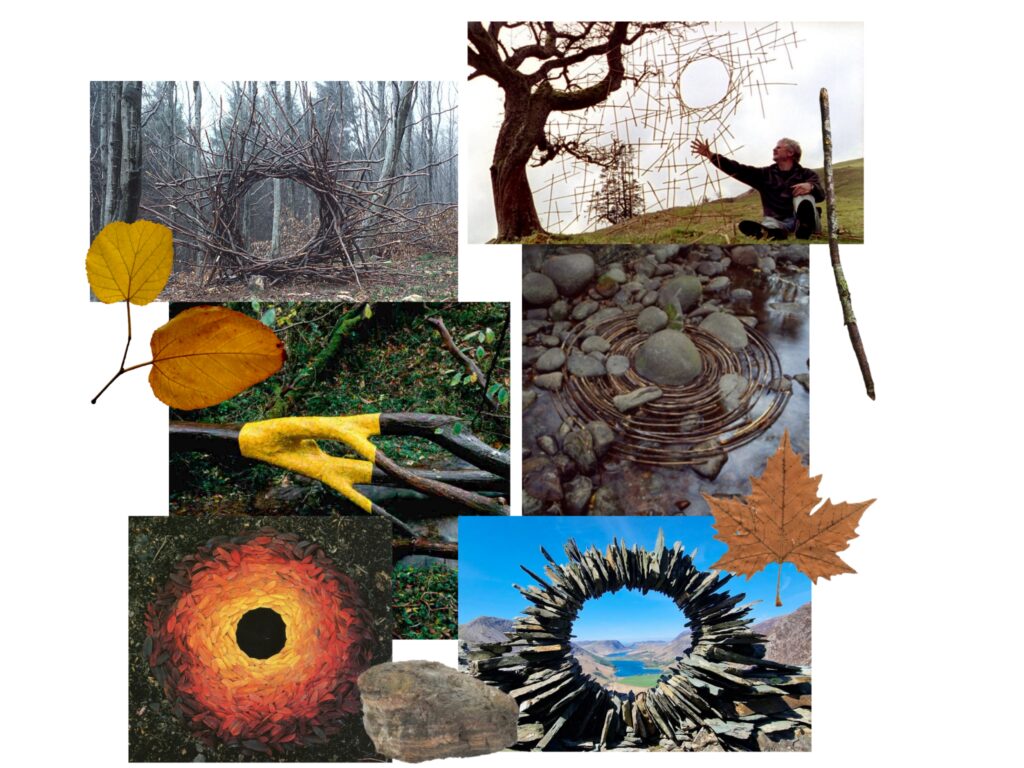
Andy Goldsworthy’s land art has been a profound inspiration for my project “Make Your Mark.” Goldsworthy’s work, characterized by its use of natural materials and its focus on the ephemeral nature of art, closely aligns with the core principles of my project.
“Make Your Mark” is a week-long initiative where participants are encouraged to create art pieces that are ephemeral, much like Goldsworthy’s creations that are designed to change and eventually disappear. Goldsworthy’s approach to using elements from the natural environment—such as leaves, ice, stones, and branches—has influenced the way I encourage participants to engage with their surroundings and incorporate natural materials into their work.
Goldsworthy’s art emphasizes the beauty of the transient, celebrating the temporary state of his sculptures as they are altered by natural forces. This has inspired me to design activities for “Make Your Mark” that focus on the process of creation and the fleeting nature of the artworks. For instance, one task might involve arranging leaves in intricate patterns that will be scattered by the wind or creating ice sculptures that will melt away, leaving behind only a memory of their form.
The temporality of Goldsworthy’s pieces invites a deep engagement with the present moment and a mindful appreciation of the process over the final product. This philosophy is at the heart of “Make Your Mark,” where participants are encouraged to embrace the impermanence of their creations and to find beauty in the act of making art that is not meant to last.
In essence, Andy Goldsworthy’s land art has profoundly shaped “Make Your Mark” by inspiring a project that values the connection between art and nature, the importance of the creative process, and the acceptance of the ephemeral. Through this project, participants learn to let go of the need for permanence and perfection, finding freedom and joy in creating art that is as fleeting and dynamic as nature itself.
Initial Sketchbook Explorations:
In the early stages, I utilized sketchbooks to brainstorm ideas and experiment with different concepts. These exploratory sketches helped me visualize potential directions for the project and refine my artistic vision.


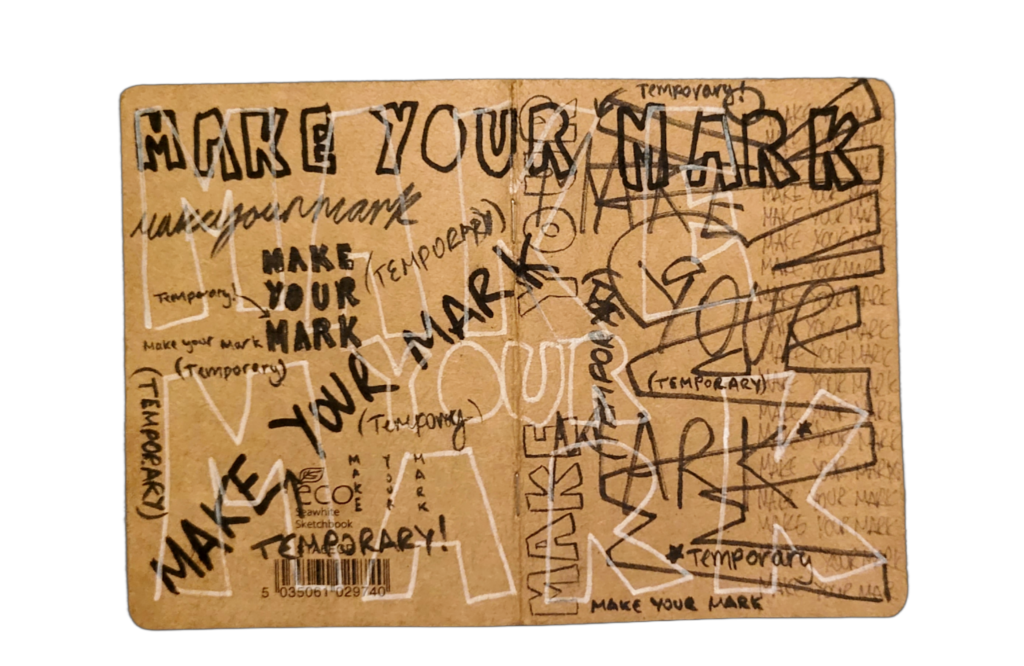


INITIAL IDEAS
Starting Points: The project began with a fascination for ephemeral art, land art, and site-specific installations. Drawing inspiration from living sustainably as a student and reconnecting with nature, I sought to infuse magic into the mundane through themes of childhood wonder, whimsy, and fantasy.
Sketchbook Pages: Initial sketchbook pages captured brainstorming sessions, concept sketches, and exploratory drawings. These pages served as a playground for creativity, allowing ideas to take shape and evolve organically.


EPHEMERAL ART
Experimentation: I experimented with various ephemeral art techniques, including candle painting and wax melt carving, exploring the interplay between natural materials and temporary installations. This experimentation fueled a deeper interest in natural art and land art practices.
Reflection: The process of experimenting with ephemeral art techniques led to a deeper understanding of materiality and temporality in art. It prompted reflections on the transient nature of creativity and the importance of embracing impermanence in artistic expression.






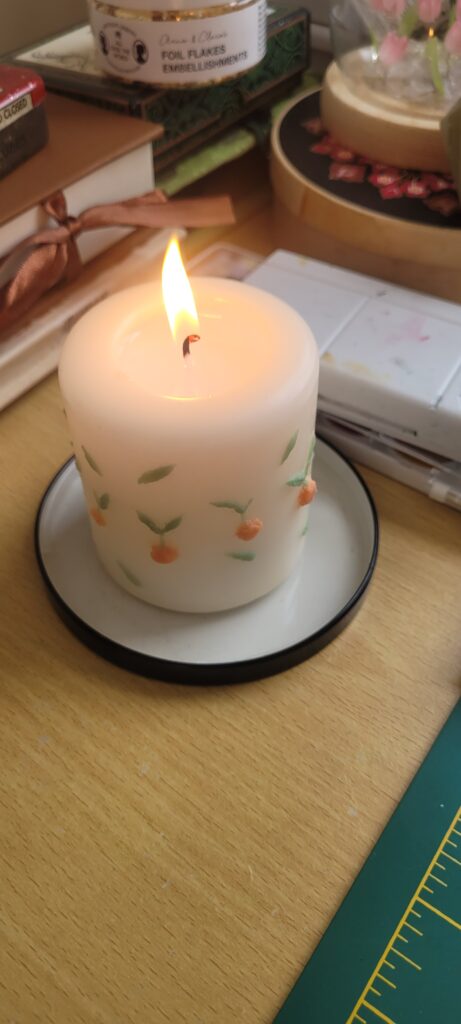



GARDEN GUARDIANS
Concept Development: The concept of “Garden Guardians” or “Green Guardians” emerged as a whimsical response to the project’s themes. These tiny fantasy beings, made from entirely natural local materials, were envisioned as protectors of nature, hidden in plain sight to be discovered and reclaimed by the environment.
Educational Element: Beyond their aesthetic appeal, Green Guardians served an educational purpose, encouraging viewers to take better care of the earth and appreciate the beauty of their surroundings. This concept added depth and meaning to the project’s narrative.



One of the defining aspects of the Garden Guardians project was the decision to create these whimsical beings entirely out of natural materials and to place them back into nature once completed. This approach was not only a creative choice but also a deliberate statement about the interconnectedness between art, nature, and sustainability.
Each Garden Guardian was meticulously crafted using materials sourced from the local environment, such as twigs, leaves, flowers, and stones. By utilizing these natural elements, I aimed to imbue the Guardians with a sense of authenticity and harmony with their surroundings. It was important to me that the materials used reflected the spirit of the project, emphasizing the idea of working in harmony with nature rather than against it.
The process of gathering materials for the Guardians was a deeply immersive experience, allowing me to connect with the natural world on a profound level. As I searched for the perfect twigs or the most vibrant flowers, I felt a sense of reverence and appreciation for the beauty and abundance of the natural world. This process of gathering materials became an integral part of the creative journey, informing the character and personality of each Guardian.
Once the Guardians were crafted, they were placed back into nature, hidden in plain sight to be discovered and reclaimed by the environment. This act of returning the Guardians to their natural habitat was symbolic of the cyclical nature of life and art, emphasizing the impermanence and transience of creative expression. It also served as a reminder of our interconnectedness with the natural world and our responsibility to care for and protect it.
The placement of the Guardians in nature was a deliberate choice, intended to spark a sense of wonder and curiosity in those who encountered them. Whether nestled among the branches of a tree or perched on a moss-covered rock, each Guardian became a part of the landscape, inviting viewers to pause, reflect, and appreciate the beauty of their surroundings.
In this way, the Garden Guardians project transcended traditional notions of art and audience, blurring the boundaries between creator and viewer, human and nature. It was a celebration of the inherent magic and beauty of the natural world, a reminder that art is not just something to be observed but something to be experienced, cherished, and ultimately, returned to the earth from which it came.
Images of final outcome




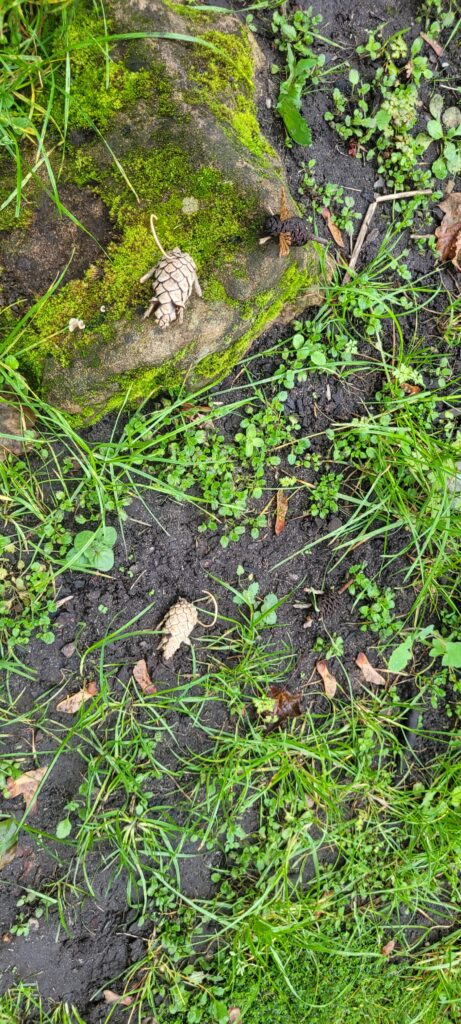













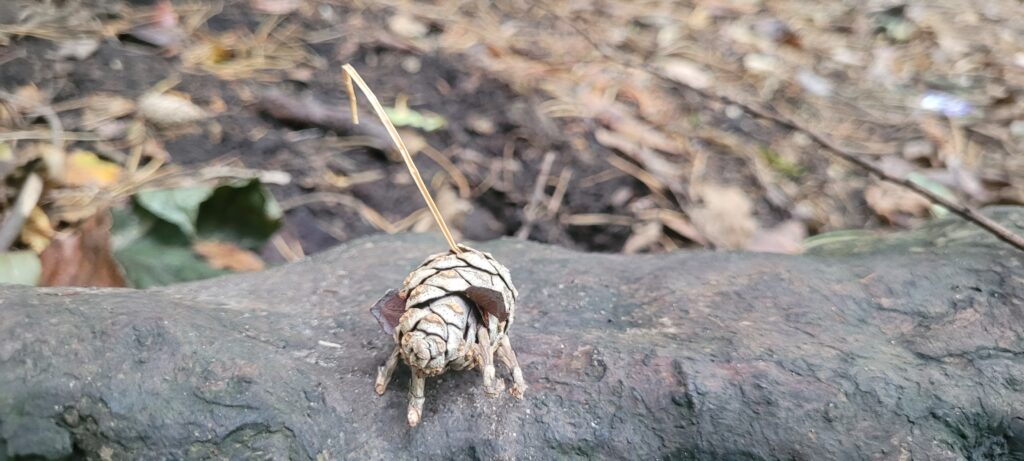







DIGITAL COLLAGE
Character Building: Digital collage techniques were employed to visualize and develop the personas of the Garden Guardians. Through experimentation with materials and compositions, I explored different character archetypes and visual aesthetics.
Reflection: Reflecting on the digital collage process, I identified what elements worked well and what didn’t resonate with the project’s themes. This critical reflection informed subsequent iterations and helped refine the character designs.



CONCEPT, MEANING, POTENTIAL DEVELOPMENT
Interactive Elements: Exploring potential developments beyond traditional art forms, I considered incorporating interactive elements such as QR codes and educational components. Research into geocaching and local wildlife protection informed ideas for engaging viewers on a deeper level.
Looking back on my “Make Ur Mark” project, there are several areas where I would approach things differently if given the opportunity to do it again.
Firstly, I realize that I could have delved deeper into the thematic exploration of ephemeral art, land art, and site-specific installations. While I touched upon these concepts, I now see the value in conducting more thorough research to truly understand their historical and conceptual underpinnings. This deeper understanding would have informed my creative process and added richness to the project’s narrative.
In terms of my sketchbook exploration, I recognize that I could have been more intentional and organized in my approach. Rather than allowing my ideas to scatter across the pages, I would have benefited from using structured exercises and themes to guide my explorations. This would have ensured greater coherence and cohesion in my ideas and concepts from the outset.
Experimentation and iteration are key aspects of any creative endeavor, and I now see that I could have embraced these principles more wholeheartedly. Instead of shying away from failure, I would have welcomed it as a natural part of the process and used setbacks as opportunities for learning and growth. This mindset shift would have allowed me to explore new techniques, materials, and approaches with greater confidence and openness.
Conceptual development is another area where I would make changes. While the concept of “Garden Guardians” emerged organically, I now realize that I could have refined the conceptual framework and narrative arc of the project more thoroughly. This would have ensured clarity and coherence in communicating the project’s message to viewers and added depth to the overall experience.
When it comes to character design, I recognize that I could have invested more time and effort in creating distinctive and memorable personas for the Garden Guardians. By experimenting with different visual styles, aesthetics, and mediums, I could have brought these characters to life in a more dynamic and engaging way, enhancing the project’s impact and appeal.
Exploring the potential for interactive elements is another avenue that I would have pursued more vigorously. Integrating QR codes, augmented reality, or tactile components could have enriched viewer engagement and interaction, adding layers of depth and interactivity to the project’s narrative.
Documentation and reflection are crucial aspects of the creative process, and I now see that I could have approached these practices more comprehensively. By documenting the creative process more thoroughly and making reflection an ongoing practice throughout the project, I could have gained valuable insights and identified areas for improvement in real-time, leading to a more refined and polished final outcome.
Finally, collaboration and community engagement are areas that I would have explored more actively. By partnering with local organizations, schools, or community groups, I could have involved diverse perspectives and fostered a sense of ownership and connection to the project, amplifying its impact and reach.
Overall, reflecting on my “Make Ur Mark” project has been a valuable learning experience. While there are certainly areas where I would make changes if given the opportunity to do it again, I am grateful for the insights gained and look forward to applying them to future creative endeavors.

